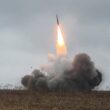Sweden signs €1bn contract for 2025‑2027 work on future fighter, extending Saab’s program that includes manned and unmanned systems.
New Contract Extends Saab’s Future Fighter Program
Sweden signed a contract worth 1 bn Polish zloty (2.6 bn Swedish krona) for work between 2025 and 2027. Saab will develop concept studies for both manned and unmanned aircraft that form a single system, plus demonstrator technologies, according to the company’s statement.
Scope of the Agreement and Preliminary Work
The new deal follows an earlier 2024 agreement that began the project’s analysis. Saab now receives significant funding for deeper theoretical work on a potential new manned‑and‑unmanned aircraft and for creating demonstrators. In practice, this involves small flying models that validate design assumptions and collect data on real‑world behaviour beyond virtual simulations.
Timeline to Production
From the current phase to the start of serial production of Sweden’s next‑generation fighters remains long. The program, formally named KFS (Koncept för Framtida Stridsflyg), already employs about 270 people. The first demonstrator flight is scheduled for 2026, and a 2031 decision will determine whether the government proceeds to purchase and produce the aircraft. Delays are likely and deadlines could extend.
Sweden’s Ambition for a Stealth, Multirole Combat Aircraft
Reports say the new Swedish aircraft will feature stealth technology and expanded electronic‑warfare capabilities. It will come in two cooperating versions—manned and unmanned—following the current trend of “loyal‑wingman” drones that closely collaborate with the manned platform for dangerous missions or extra ammunition loads. Concrete details remain forthcoming.
Other European Fighter Programs: Turkey, Britain, and the Rest
Turkey’s TF‑X, also known as the Kaan, entered the prototype stage in 2024 after a 2011 contract. The program gained momentum in 2019 when the U.S. withdrew Turkey from the F‑35 programme; the loss highlighted Turkey’s lack of autonomy. Production of first serial Kaan aircraft is planned for the early next decade, and the country is developing its own TEI‑TF35000 engine.
The GCAP Programme and Future 6th‑Generation Aircraft
The Global Combat Air Programme (GCAP), led by Britain with Italy and Japan, is set to produce a sixth‑generation aircraft. A demonstrator is slated for 2027 and full‑scale production in the mid‑2030s. This platform aims to be larger than the F‑35, with greater range, payload, and advanced sensor suites, and will manage a team of drones, powered by a powerful new engine capable of directed‑energy weapons.
The FCAS Programme and Franco‑German Tensions
The Franco‑German‑Spanish Future Combat Air System (FCAS) remains in early development. The programme includes manned and unmanned winged aircraft and advanced collaborative systems, sometimes called the “combat cloud.” However, internal disputes over responsibility and profits, especially between Dassault and Airbus, threaten the programme’s continuity, echoing past Eurofighter conflicts where France withdrew and pursued the Rafale.










